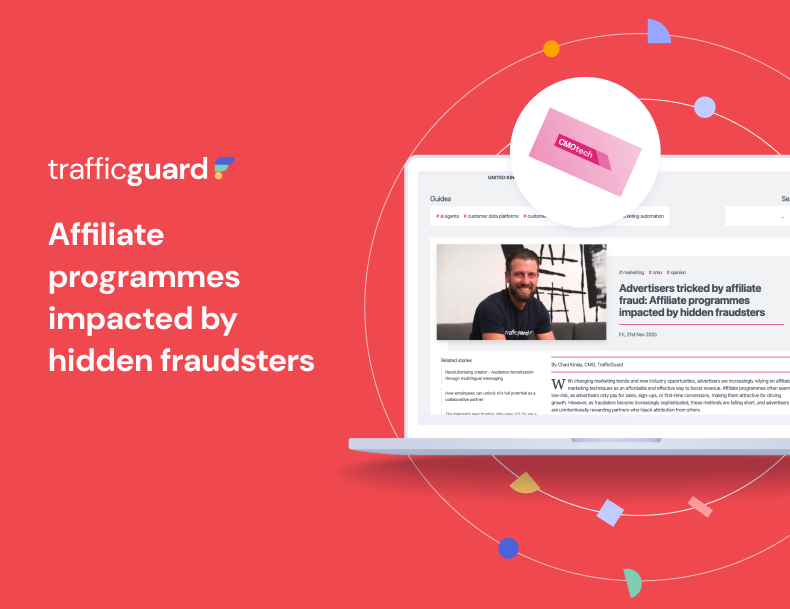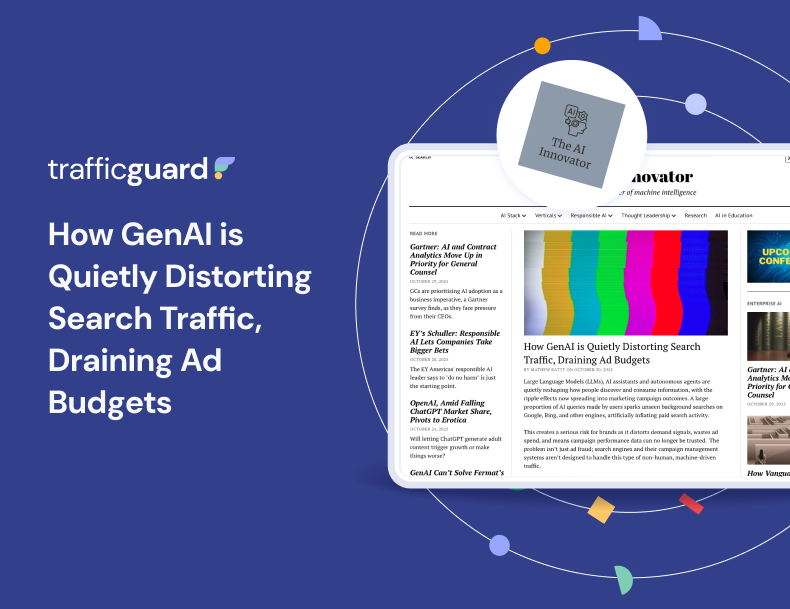How fake clicks and traffic are devaluing operator ad campaigns
.png)
Mobile operators are investing heavily in digital campaigns but this has led to a rise in ad fraud writes TrafficGuard Chief Marketing Officer Chad Kinlay.
Marketing is crucial for mobile operators to stand out and capture potential customers’ attention. These campaigns require significant investment but deliver personalised, relevant experiences.
Fighting fraud must be a top priority for operators aiming to grow subscribers and boost revenue. Understanding fraud tactics and gaining traffic transparency are two of the most effective defences.
Fake traffic often blends with legitimate traffic and can fool older detection tools, but it leaves clues for experienced analysts. For example, sudden traffic spikes with few conversions can signal fraud.
Operators should audit analytics to identify traffic sources. Large volumes from low-quality or unfamiliar sources may indicate fake traffic. Why do they go to such lengths? Sometimes it’s to fraudulently claim performance incentive, sell fake traffic or sabotage competitors by draining their ad budgets. This fraud is organised, deliberate, and financially motivated.
Strengthening identity verification at signup helps prevent fraudsters from creating multiple fake profiles.
Operators can also set custom verification rules that limit how often a user can interact with a paid ad. Bots will be blocked once they reach this limit, preventing click spam.
Advanced fraud detection tools can identify legitimate versus fraudulent traffic at the first click, filling gaps in security. For example, a Middle East operator struggling with costly brand search campaigns and high IVT saw a 20% cost reduction, a 27% drop in invalid traffic, and a 13x ROI increase after deploying such tools.
Competition for new subscribers shows no sign of slowing. Mobile operators must optimize campaigns and combat growing ad fraud. Fortunately, fraudsters aren’t as invisible as they think.
In the telecom sector ad spending projected to increase by 8.3 per cent, according to Dentsu. Telecoms is one of the fastest-growing sectors for digital advertising. But as spending surges, so does ad fraud bad actors see telecom operators as prime targets especially since many mobile security systems lack defences against ad fraud.
Fraudsters use various tactics behind the scenes, powered by AI bots that generate fake clicks on campaigns. While a single fake click may seem insignificant, collectively they rapidly raise cost-per-clicl rates. Operators end up paying for clicks that don’t convert, stunting revenue growth. These bots are getting harder to detect as they mimic human behaviours—scrolling, responding to CAPTCHAs, and more.
Fraudsters use AI-driven bots, to sabotage operators’ campaigns. These fake clicks and other deceptive tactics distort campaign metrics, driving up customer acquisition costs and reducing return on investment To grow their subscriber base without interference, mobile operators must strengthen their defences and confront fraud directly.
Not all invalid traffic is malicious. Some of it happens unintentionally. Users experiencing network problems may repeatedly click on paid search links to reload a page. Loyal customers might use branded ads as shortcuts to log in, especially if the app is slow or buried in search results. These actions aren’t harmful, but they still increase cost-per-click and they waste budget.
To maximize ad value and ROI, operators must closely monitor campaign performance. While this may seem straightforward, ad fraud increasingly throws campaign results off track.
Operators also face “app install attribution stealing. This is where networks of devices or collaborators create fake profiles that install an operator’s app and then quickly uninstall it, creating the illusion of genuine downloads, tricking operators into paying for fake installs.
Additionally, bad actors may hijack credit for installs earned by legitimate publishers. By installing malware on users’ devices, fraudsters learn when an app is being installed and “inject” a fake click during download. This falsely attributes the install to the fraudster, depriving real publishers of deserved credit.
Impact
Ad fraud not only drains budgets during attacks but also complicates accurate campaign measurement. Floods of fake clicks inflate metrics, making campaigns appear successful when they’re not. Operators may then invest in similar campaigns unknowingly wasting spend, while fraudsters continue attacking behind the scenes—leaving revenues drained.
With practical, data-driven strategies, like regular traffic audits and advanced detection operators can ensure their ad budgets reach real users, not fraudsters.
Read the full article at Mobile News UK.
Get started - it's free
You can set up a TrafficGuard account in minutes, so we’ll be protecting your campaigns before you can say ‘sky-high ROI’.
Chadwick Kinlay heads up Traffiguard’s global marketing function out of Australia, bringing with him over 20 years of commercial, branding, communications and business development experience.
Subscribe
Subscribe now to get all the latest news and insights on digital advertising, machine learning and ad fraud.




.webp)


